U-2D MIDAS
"That's the letter U, and the numeral 2. The four-man band features Adam Clayton on bass, Larry Mullen on drums, Dave Evans—nicknamed 'The Edge', on..." ...this is [REDACTED]! Nobody cares! These guys are from England and who gives a [REDACTED]!?" Whoops, wrong U-2. This is about the cooler one.
I'm not about to fill the text of this article with [REDACTED], but suffice to say that the history of the U-2 that we do know probably pales in comparison to the history we DON'T know.
Instead of filling this up with the same history that you can read everywhere else I'm going to focus on this specific variant, which was part of Project Low Card / Project Smokey Joe. This program developed sensors and techniques for monitoring and detecting Soviet ICBM launches called MIDAS (MIssile Detection and Alarm System). A sensitive infrared detector and its operator station were installed behind the cockpit, while the forward fuselage was painted flat black for the benefit of the IR detector. The whole system was calibrated by having the plane observe rocket launches from Cape Canaveral. MIDAS was a highly ambitious project to place a network of IR detectors in space pointed at the USSR to act as a sort of tripwire for missile launches, like the Distant Early Warning (DEW) Line on Earth. MIDAS was not a success: if the launch vehicles didn't blow up, the satellites wound up detecting sun reflections or other false alarms. The U-2D and its manned turret ended up performing all sorts of duties: spotting KH-2 CORONA film capsules as they re-entered the atmosphere; observing X-15 flights; measuring thunderstorms; and acting as a chase plane for the COMPASS CALL drone program. The U-2D was also involved in a project (or possibly a series of projects) called Program 949, Program 647, and/or "Defense Support Program" which seem to be oriented towards the same goals as the earlier MIDAS program, namely testing sensors for future implementation on satellites. If this seems deliberately vague, you're correct: reconnaisance satellites are some of the most jealously guarded secrets and the only reason we know these things exist at all is because amateur astronomers spot them while trying to track known satellites.
You'd think that the premier spy plane of the US intelligence community for over half a century would be kept to immaculate standards, but you'd be very wrong. Flat black paint weathers horribly, and all photos of U-2s in service show a messy, sloppy patchwork of bird droppings, irregularly faded panels, grease smears, handprints, and scuffed paint down to and past the primer. An unlimited budget for bleeding edge sensors, but none for a regular paint job! Maybe this is part of some MKULTRA-level CIA psyop. Maybe it isn't. Who knows! There's just one hurdle: the MIDAS IR detector is depicted in the deployed position, which means you're going to be looking down the big empty void of the scope. There's only a handful of photos of the aircraft with the MIDAS detector deployed and none of them are looking into it, so I'm going to spray the inside with some sort of colorshift paint that approximates period-accurate coated optics. Complicated, again, by the fact that the lens for the periscope doesn't have any framing. I roughed out a mask from tape.
Tolerances on this kit are extremely tight and are of the "scrape off the paint from joining surfaces or else all of the 1um incongruities will add up and make things wildly out of proportion later on" variety. The intakes are infuriating, but they will fit "flush" after no less than 74 cumulative minutes of obscene language, which serves to lubricate the parts and make them fit better. Everything else inside the fuselage DOES fit, but be aware that the fit of the compressor faceplate in the fuselage halves is so tight that it may seem like it's misaligned. It isn't. You need to apply a fair amount of pressure to the fuselage sides at the forward lip of the wing root and squeeze until you hear the plastic creak. It is so tight that it doesn't need glue. If you don't do this, you'll be left with a very wide gap immediately behind the MIDAS operator station (or fuselage fairing) and the geometry of everything forward of that plate will be off-kilter. There is no detail inside the MIDAS operator station, which is fine because the windows are super small.
I used quotation marks around "flush" earlier because when it's time to fit the intakes you will notice just how tight and precise the tolerances truly are. The inner intakes may possibly sit proud of the outer lip of the fuselage by a hair's width, and this is enough to create a nasty gap where the outer intakes meet the fuselage. My advice? Sand down the inner intakes before you fit them into the fuselage so they sit "below" the fuselage lip. Don't worry about a seam because the intake color isn't white but a sickly yellow / green shade that can look like yellow chromate or RAF "Sky" depending on the lighting conditions. It hides seams just as well as white shows them.
Wings are secured into the fuselage by very stout tabs that are, again, within nanometer tolerances. This is great because this is doubtless a high-stress joint, but you would be best served by chamfering a corner off the tab so you can slide it into the slot. Do NOT use glue.
AFV Club actually give you parts for the U-2A variant in this kit, which is something to consider if you can find this specific kit at a discounted price. You get the sunshade and no instructions about how to assemble it, but that's real easy. Again, the extremely tight tolerances are to your benefit because the "pogo" stabilizers can be mounted with no glue.
Decals are printed by Cartograph and are suprisingly tough. Silvering is inevitable, but they're strong enough to resist straight solvaset.

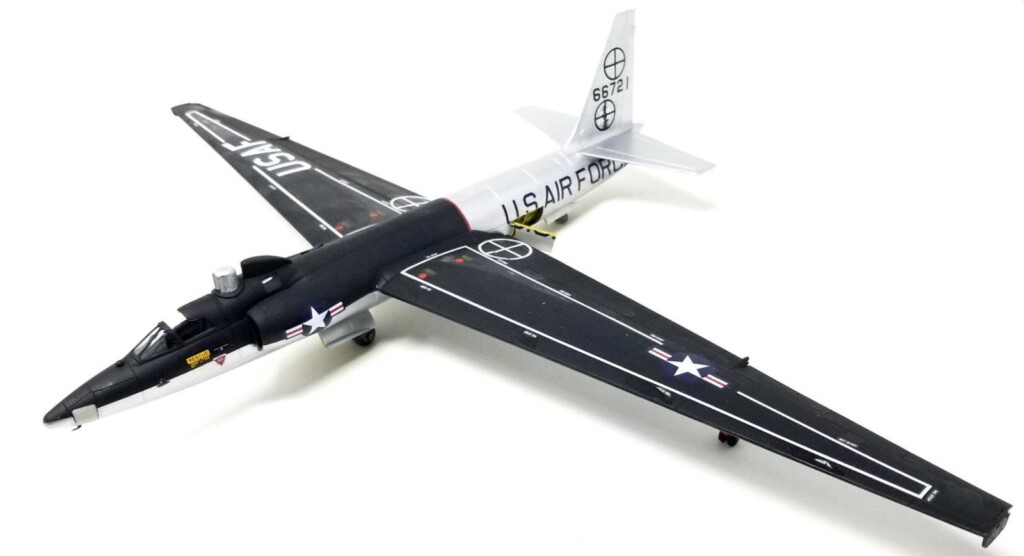

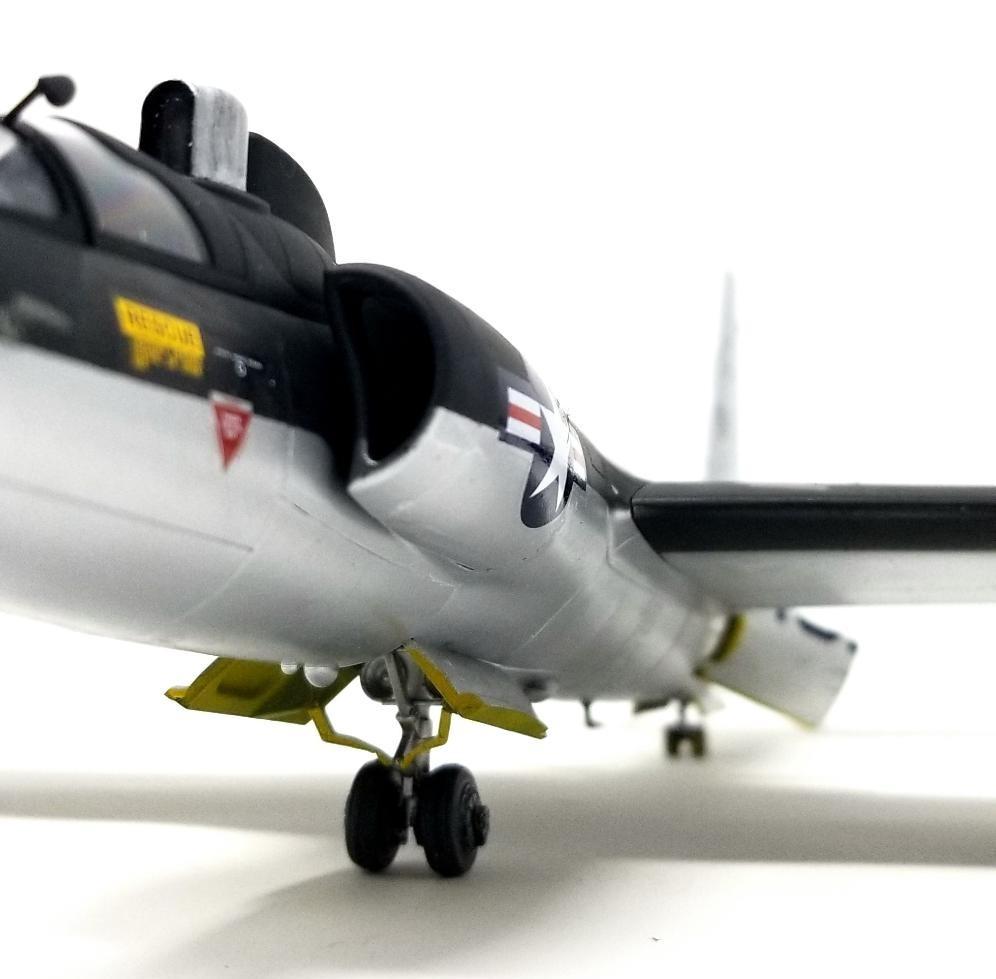


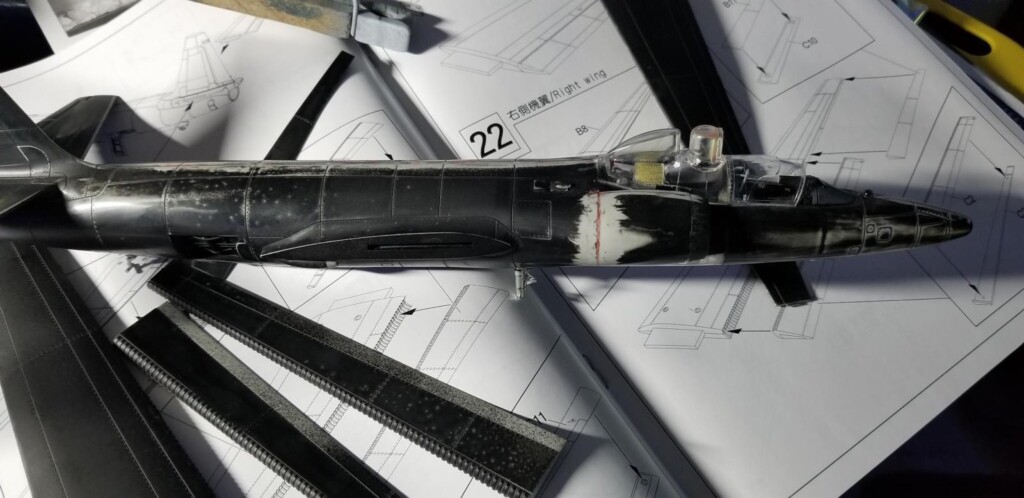





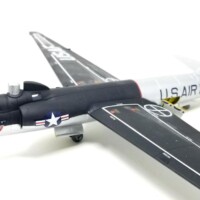

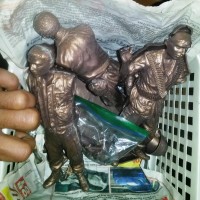
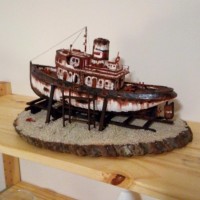
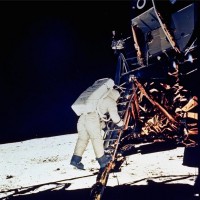
Fantastic nob, Wes! A very interesting story, too, it is really fascinating that what we know about this bird is way less than what we don't.
Just for the record Wes U2 are from Dublin in Ireland. Nice job on your U2 though.
Oh, I know. I'm referencing the infamous Casey Kasem meltdown where he tries and fails to get the band's name right.
Oh right I'm not familiar with that I'll check it on YT
HaHa ! I just found it on YT , Casey always seems so wholesome , what a potty mouth !
Cheers.
It's quite appropriate due to the intakes and the fan plate. It really does feel like you're doing something wrong and the plastic will break, but the tolerances truly are that tight and precise. Nerve-wracking if you're not expecting it. This DOES mean fewer seams, though, and that's a good thing.
This is a very nice U2 variant, Wes @avispa93
I was not aware of this specific variant. Thanks for sharing its background.
Cool looking spy plane, there’s a great BBC Top Gear episode where Matt Le Blanc drives the chase car when a U-2 lands.
Very cool build, and thank you for the construction pointers.
Well done Wes, quite an A/C considering it's been around for ever.
An interesting aircraft and a well written article too. @avispa93
Very nice build - love the unusual subjects, and this is a great one!
Well done, don't see that variant often. Interesting.